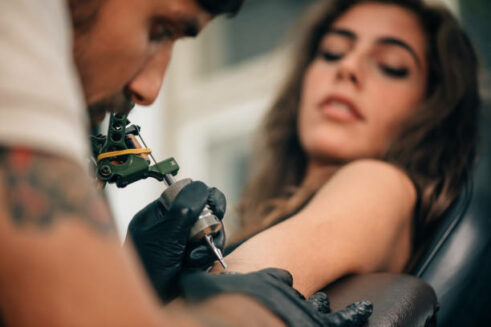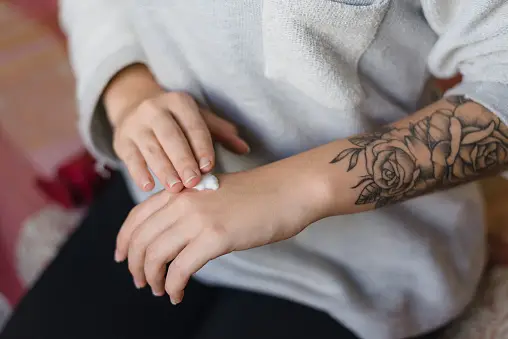Qué saber sobre las cremas que atacan el tatuaje
Tatuajes, Las marcas indelebles de la autoexpresión., han sufrido una metamorfosis con la llegada de las cremas anestésicas. Antes de profundizar en los pros y los contras, Comprender los matices de estas cremas es imperativo.
¿La crema aturdida hace que sea más difícil tatuarse??

La crema aturdida puede hacer que sea un poco más difícil de tatuar porque reduce la sensación en la piel. Esto puede hacer que sea más desafiante que el artista del tatuaje evalúe la presión y la profundidad de la aguja del tatuaje. Sin embargo, Muchos artistas de tatuajes tienen experiencia en el trabajo con cremas anónimo y pueden ajustar su técnica en consecuencia. Algunos artistas también pueden preferir no usar crema de adormimiento porque creen que afecta la calidad del tatuaje o la experiencia del cliente durante la sesión.
¿Por qué los artistas de los tatuajes no quieren que uses crema adormecedora??
Mientras que las cremas anormes pueden parecer una panacea para el dolor, Los artistas del tatuaje a menudo se paran como oponentes firmes. El desafío contra las cremas entumecedor se deriva del deseo de preservar la autenticidad del proceso de tatuaje. Los artistas experimentados argumentan que la incomodidad inherente a los tatuajes es un rito de paso, una conexión tangible entre el individuo y su forma de arte elegida. Además, Las cremas anormes pueden distorsionar el umbral de dolor del cliente, potencialmente conduciendo a sesiones más largas y disminuyendo la capacidad del artista para evaluar la resistencia del cliente con precisión.
Sin embargo, Mientras que algunos artistas del tatuaje permanecen opuestos a las cremas atrevidas, Un número creciente ahora recomienda cremas de tatuaje de alivio del dolor seguro. De hecho, Muchos artistas están creando los suyos cremas de adormecedora de tatuajes de etiqueta privada Para mejorar la experiencia del tatuaje. Este cambio refleja un reconocimiento de diversas necesidades del cliente, con el objetivo de equilibrar la comodidad sin sacrificar la conexión auténtica al proceso de tatuaje. El énfasis está en la seguridad, con artistas que seleccionan ingredientes suaves pero efectivos para minimizar la incomodidad. En esencia, La industria del tatuaje está evolucionando para adoptar perspectivas alternativas y priorizar tanto el bien y el bienestar del cliente.
¿Todavía puedes sentir dolor con crema adormecedora??
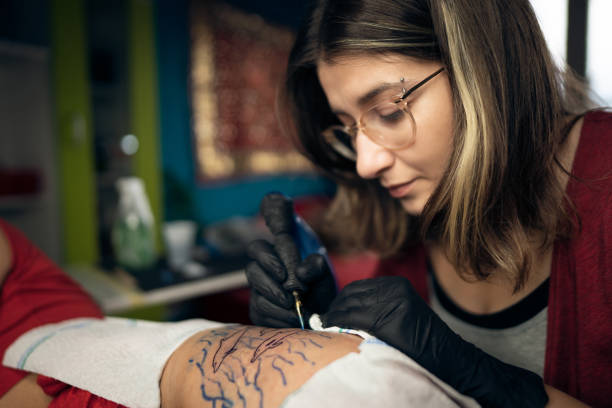
La paradoja de las cremas entumecedoras radica en su capacidad para abordar el dolor mientras deja una conciencia residual. Mientras que los usuarios experimentan una reducción considerable en el dolor, Las cremas anormes rara vez garantizan anestesia completa. Esta sensación matizada permite una experiencia de tatuaje más tolerable, aunque con una mayor conciencia del proceso.
Ingredientes activos
Detrás del velo de las cremas atroces hay potentes ingredientes activos. Los ingredientes activos comunes incluyen lidocaína, prilocaína, Benzocaína, y tetracaína. Estas sustancias funcionan bloqueando temporalmente las señales nerviosas, Reducción de la sensación de dolor en el área aplicada.
OTC VS. Cremas de adormecedora de receta
La accesibilidad de las cremas aturdidas abarca opciones de venta libre a formulaciones de fuerza de prescripción. Comprender los matices entre estas elecciones es crucial para una decisión informada.
| Aspecto | Cremas de adormecedora de OTC | Cremas de adormecedora de receta |
| Disponibilidad | Ampliamente disponible, No se necesita receta | Requiere una receta |
| Resistencia de los ingredientes | Concentraciones más bajas | Concentraciones más altas |
| Uso previsto | Procedimientos menores como la depilación, tatuaje | Procedimientos médicos o cosméticos invasivos |
| Ingredientes activos | lidocaína, Prilocaína, o benzocaína | lidocaína, Tetracaína, o anestésicos más fuertes |
| Área de aplicación | Áreas pequeñas a medianas | Áreas más grandes o regiones más sensibles |
| Efectos secundarios | Generalmente bien tolerado | Mayor riesgo debido a fórmulas más fuertes |
| Costo | Más asequible | Puede ser más caro |
| Facilidad de acceso | Fácilmente accesible sin receta | Requiere una visita al proveedor de atención médica |
| Regulación | Regulado, pero menos estricto | Regulaciones estrictas debido a la potencia y los riesgos |
¿Cuáles son los pros y los contras de la crema adormecedora??
Navegar por el paisaje de cremas entumecedoras requiere una exploración completa de sus ventajas y inconvenientes.
| Pros de crema adormecedora | Contras de crema adormecedora |
| 1. Alivio del dolor: Las cremas anormes sobresalen al opilar los bordes afilados del dolor, Proporcionar una experiencia de tatuaje más soportable. | 1. Riesgo de exceso: Existe el potencial de que los clientes dependan demasiado de cremas entumecedoras., conduciendo a sesiones prolongadas. |
| 2. Resistencia de sesión extendida: Templando el dolor, Las cremas atrevidas pueden extender la resistencia de un cliente durante más tiempo, Sesiones de tatuajes intrincadas. | 2. Alteración artificial del umbral de dolor: Los artistas argumentan que puede alterar el umbral de dolor de un cliente, impactando la autenticidad de la experiencia. |
| 3. Mayor accesibilidad: Las cremas entumecedoras democratizan los tatuajes, haciendo que la experiencia sea accesible para aquellos que podrían rehuir debido al dolor. | 3. Potencial de recuperación prolongada: Los clientes pueden darse cuenta de la incomodidad posterior a la sesión, Impactar las prácticas de cuidado posterior y los tiempos de recuperación. |
Cómo usar crema que aturde la piel
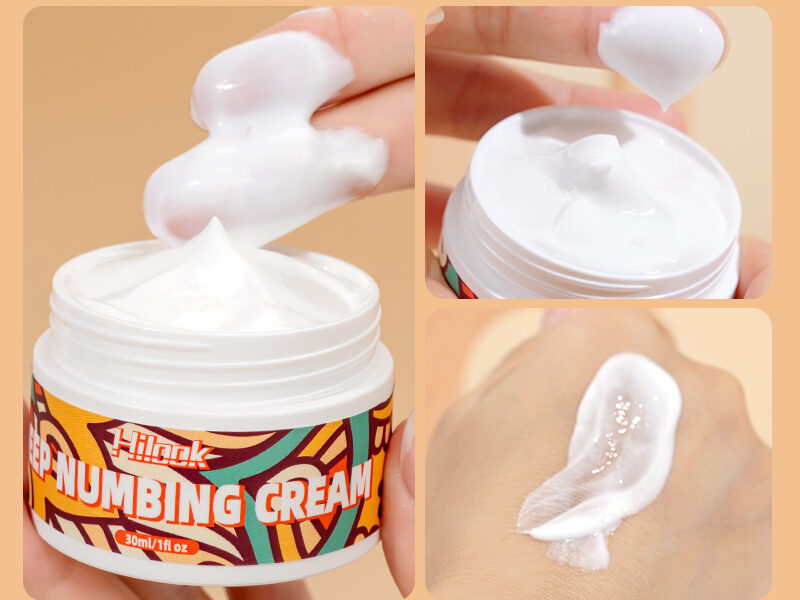
La navegación de la aplicación de la crema que aturde la piel exige atención al detalle y el cumplimiento de las pautas específicas para garantizar un alivio óptimo del dolor durante el proceso de tatuaje. Aquí hay una guía completa sobre cómo usar la crema aturdida de manera efectiva:
- Elija la crema aturdida correcta: Comience seleccionando una crema anestace de alta calidad. Considere factores como la concentración de ingredientes activos como la lidocaína y la prilocaína, así como cualquier componente adicional que pueda mejorar la efectividad de la crema.
- Consulta con el artista del tatuaje: Antes de usar crema de adormecimiento, participar en una comunicación abierta con su artista de tatuajes. Algunos artistas tienen preferencias o pautas específicas para usar agentes aturdidos.. Comprender su perspectiva garantiza una experiencia de tatuaje colaborativa y sin problemas.
- Limpiar la piel: Limpie a fondo el área donde se aplicará el tatuaje. Use un jabón y agua suaves para eliminar cualquier suciedad., aceites, o residuos que podrían interferir con la absorción de la crema aturdida.
- APlay una capa delgada: Uso de un aplicador limpio y estéril, Aplicar un delgado, Incluso una capa de crema adormecedora al área objetivo. Evite la aplicación excesiva, ya que puede no mejorar la efectividad y puede conducir al desperdicio.
- Cubrir con envoltura de plástico: Una vez que se aplica la crema adormecedora, Cubra el área con envoltura de plástico. Este paso tiene un doble propósito: evita que la crema se frote a la ropa y ayuda a crear una barrera que mejore la absorción.
- AlabamaBajo tiempo de absorción adecuado: Cada crema de adormimiento tiene un tiempo de absorción recomendado específico. Típicamente, se necesita 20 a 30 minutos para que la crema alcance su máxima efectividad. Durante este período, Es aconsejable mantener el área cubierta y evitar cualquier perturbación.
- REMOVE EXCEDE CREEM: Después de que haya pasado el tiempo de absorción recomendado, Retire suavemente cualquier exceso de crema anomnante con una limpieza, tela húmeda. Este paso asegura que la piel esté preparada para el proceso de tatuaje sin ninguna interferencia de la crema residual.
- PAGaccesorio con el tatuaje: Con la crema adormecedora absorbida con éxito, Su artista de tatuajes puede continuar con el proceso de tatuaje. La sensación disminuida permite una experiencia más cómoda al tiempo que preserva la integridad del ritual de tatuaje.
Consideraciones adicionales
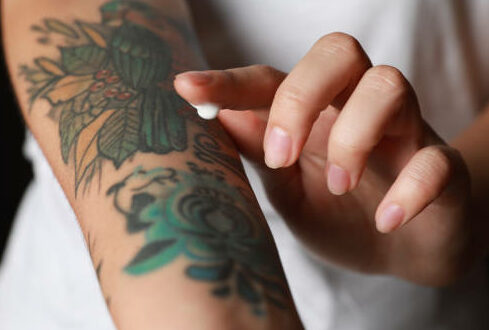
- Prueba de parche: Antes de la aplicación generalizada, Realice una prueba de parche en un área pequeña de su piel para asegurarse de que no tenga reacciones adversas o alergias a la crema adormecedora.
- Siga las instrucciones del fabricante: Adhierte estrictamente a las instrucciones proporcionadas por el fabricante de crema adormecedora. Esto incluye los tiempos de aplicación recomendados, dosificación, y cualquier precaución específica.
- Consulte con un profesional de la salud: Si tiene alguna condición o inquietud de salud preexistentes sobre el uso de crema anestacen, Busque el asesoramiento de un profesional de la salud antes de la solicitud.
Siguiendo estos pasos meticulosamente, Puede aprovechar los beneficios de la crema que aturde la piel, Mejorar su experiencia de tatuaje y hacer que el proceso sea más tolerable.
Almacenamiento
El almacenamiento adecuado de la crema adormecedora garantiza su eficacia y longevidad. Protegiéndolo desde extremos de temperatura y luz solar conserva su potencia.
Control de envenenamiento
Mientras que las cremas anormes son generalmente seguras, La importancia de la vigilancia no puede ser exagerada. Las medidas de control de envenenamiento deben ser fácilmente accesibles en caso de ingestión accidental.
Resumen
En el tapiz de cremas atroces, La decisión de usar o abstenerse se convierte en un viaje personal.. La interacción del dolor, arte, y la perspectiva del artista crea una narración que es tan única como los tatuajes mismos.
Preguntas frecuentes
1. ¿La crema anestésica afecta la calidad del tatuaje??
Cremas adormecedoras, Cuando se usa correctamente, No comprometa la calidad del tatuaje. Sin embargo, Su impacto en la percepción del dolor puede variar.
2. ¿Por qué los artistas del tatuaje son la crema adormecedora??
Los artistas del tatuaje a menudo resisten cremas entumecedoras para preservar lo auténtico, Experiencia transformadora de tatuajes y medidas con precisión a los clientes’ resistencia.
3. ¿Puedes usar crema de adormimiento para todos los tipos de tatuajes??
Las cremas anormes son generalmente adecuadas para varias aplicaciones de tatuajes, Pero la consulta con el artista del tatuaje es esencial para la compatibilidad con diseños específicos.
4. ¿Hay algún efecto a largo plazo del uso de crema adormecedora??
Mientras que las cremas anormes son generalmente seguras, El uso prolongado y excesivo puede provocar sensibilidades de la piel. Es crucial seguir las pautas de uso recomendadas.
5. ¿Puedes mezclar diferentes cremas anormes para una mayor eficacia??
No se recomienda combinar cremas anormes, ya que puede dar lugar a reacciones impredecibles. Cantén la dosis recomendada y las instrucciones de aplicación.
En el intrincado mundo de las cremas entumecedoras, La decisión de usarlos trasciende el mero manejo del dolor; se convierte en una elección que influye en la esencia misma de la experiencia de tatuaje. Los pros y los contras, los ingredientes activos, y la perspectiva del artista entrelazada, Crear una narrativa que se desarrolle en el lienzo de la piel de uno.


